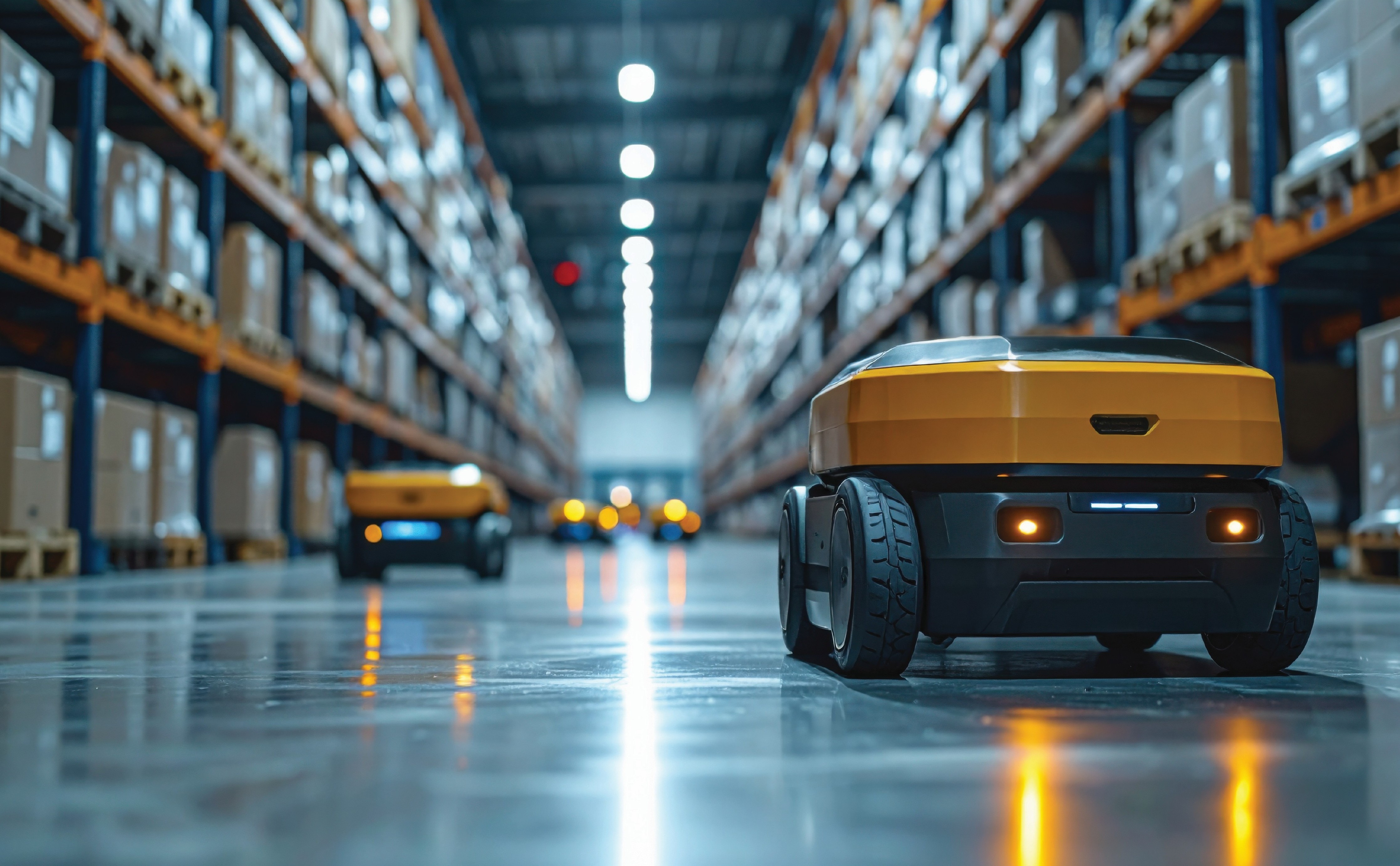
Generative artificial intelligence might provide the world economy with $2.6 trillion to $4.4 trillion annually. Combining generative AI with other technologies could add 0.5 to 3.4 percentage points yearly to increase productivity growth until 2040, claims McKinsey. (Source: McKinsey)
These numbers highlight how transforming AI automation may be across many sectors. From improving retail consumer experiences to streamlining manufacturing operations, artificial intelligence-driven automation changes company models and might surpass rivals.
The top companies are already unlocking value. Retail behemoths, for example, customize real-time shopping trips with intelligent bots. Within milliseconds, banks use machine learning to identify fraud. Predictive maintenance tools examine sensor data to help manufacturers avert equipment breakdowns before they start.
However, companies must grasp the differences between conventional automation and AI as adoption speeds forward to optimize returns and negotiate implementation difficulties.
Whether your position is C-suite executive, decision-maker, data professional investigating AI consulting possibilities, or hands-on deployments, this blog provides the fundamental knowledge to negotiate and leverage AI for automation properly.
What is AI Automation?
AI automation expands the capabilities of conventional automated systems by fusing automation and artificial intelligence technology. AI automation uses machine learning, natural language processing, and other cutting-edge AI technologies to carry out sophisticated and cognitive tasks, unlike standard automation, which usually follows pre-programmed instructions to complete repetitive operations. AI automation systems can learn from data, adjust to shifting circumstances, and make defensible conclusions without human assistance.
Examples of AI in customer service chatbot automation that can carry on natural-sounding conversations, automated banking fraud detection systems, manufacturing predictive maintenance tools, and intelligent document processing systems. Integrating AI into automation allows businesses to perform complicated jobs more effectively, reduce human error, and increase process flexibility and adaptability.
Why Do We Need AI Automation Today?
Organizations are under increasing pressure to maintain their competitiveness, agility, and sensitivity to fast market changes. While great for repeating tasks, conventional automation methods sometimes fall short in terms of complexity and variation. Artificial intelligence automation closes this difference by increasing operational agility, improving decision-making processes, and facilitating continuous innovation.
Artificial intelligence-generated automation helps companies quickly adapt to changing client expectations, operational problems, and new market needs. It dramatically increases production by AI task automation that requires analysis, judgment, and decision-making capacity. This frees human employees to focus on strategic, creative, high-value tasks. Furthermore, artificial intelligence automation offers necessary insights using data analysis, thereby improving the accuracy and timeliness of decision-making. This guarantees constant development and a competitive edge in a society that is becoming increasingly data-driven.
Let us Clear the Confusion: Are AI and Automation the Same?
Though they are sometimes used synonymously, artificial intelligence and automation are different ideas with different uses inside a company's digital transformation plan.
Usually, automation is the application of technologies that run rule-based, repeated tasks without human involvement. These systems do not adapt or grow without human reconfiguration; they follow specific, established directions. Examples include basic data entry systems, payroll processing, and AI in marketing automation for email campaigns.
Conversely, AI is a system meant to replicate human intelligence. They are capable of learning, reasoning, and dataset or experience adaptation. Unlike conventional automation, artificial intelligence systems examine data trends, grow over time, and can make decisions even in unique or unanticipated circumstances. Among the common instances of artificial intelligence are fraud detection systems, smart chatbots, and streaming platform recommendation engines
Artificial intelligence (AI) automation results from combining these two technologies and incorporating AI's intelligent features into automated systems. This strong synergy enables systems to undertake difficult, dynamic chores that traditional automation cannot manage alone.
Here is a concise traditional automation vs AI in a table for clarity:
|
Aspect |
Traditional Automation |
AI Automation |
|
Nature of Tasks |
Repetitive, rule-based tasks |
Complex, dynamic, cognitive tasks |
|
Adaptability |
Requires manual updates for changes |
Self-learning and adapts automatically |
|
Decision-making Capability |
Limited or none |
High-level, data-driven decision-making |
|
Data Processing |
Predefined datasets |
Real-time analysis and interpretation |
|
Example |
Automatic billing systems |
AI-driven customer service chatbots |
By clearly understanding these differences, organizations can strategically leverage traditional and AI automation according to their specific operational needs, maximizing efficiency and innovation potential.
Acknowledging the Challenges That Come With AI Automation
Although artificial intelligence automation offers transforming advantages, its application is not without challenges. Early recognition of these difficulties will greatly improve a company's capacity to incorporate AI-driven solutions effectively.
1. High Initial Investment
Implementing artificial intelligence automation requires large upfront expenditures involving investments in technology infrastructure, AI automation software licenses, specialized knowledge, and continuous upkeep, including tech infrastructure expenses. For small and mid-sized businesses, these expenses create significant financial restrictions that can cause delays or complications in implementation.
2. Data Quality and Management Issues
The quality and consistency of the data under analysis define much of the success of automation with artificial intelligence. Data silos, antiquated data, errors, and inadequate data governance are common challenges for many companies. Insufficient data can seriously compromise artificial intelligence models and cause erroneous results or inefficient automation.
3. Integration with Existing Systems
Including new artificial intelligence-powered automation into legacy systems or current infrastructure can be challenging and financially demanding. The deployment process becomes more difficult when aging systems and cutting-edge artificial intelligence tools clash operationally and stretch project schedules.
4. Workforce Resistance and Skill Gaps
Workers who see AI-driven solutions as challenges to job security or positions may object to using them. Furthermore, a major obstacle is the absence of internal knowledge and the ability to manage and sustain AI automation properly. This calls for large expenditures in change management and staff development projects.
5. Ethical and Compliance Concerns
Ethical privacy, prejudice, and transparency questions abound in artificial intelligence systems. Companies that use automated decision-making systems must follow ethical requirements, data protection rules, and regulatory criteria. Non-compliance risks damaging reputations, operating legal hotlines, and costing money.
6. Managing Expectations and Measuring ROI
Unreasonable expectations or unclear goals make many AI business automation unable to assess the return on investment adequately. Appropriate evaluation of these solutions depends on well-defined performance criteria, realistic expectations, and unambiguous benchmarks.
By means of careful planning, robust governance, skill-building initiatives, and explicit communication, proactive addressing of these challenges will greatly increase the success rate of artificial intelligence in automation projects, therefore guaranteeing sustainable long-term benefits.
What are the Benefits of AI Automation?
Including artificial intelligence automation into company processes has many clear advantages that will help companies to be positioned for continuous development, better efficiency, and a more competitive edge. Here are some noteworthy benefits:
1. Enhanced Efficiency and Productivity
AI automation streamlines and accelerates processes by automating repetitive and complex tasks that traditionally consume significant human resources. This allows human talent to focus on higher-value, strategic activities, enhancing overall organizational efficiency.
2. Improved Accuracy and Quality
AI-powered automation greatly lowers human error, unlike manual or conventional automated systems. Advanced algorithms allow AI to examine large volumes of data, guaranteeing constant quality and accuracy. Sectors such as manufacturing quality control, financial services compliance, and healthcare diagnostics benefit from this precision.
3. Cost Reduction and Resource Optimization
While initial setup costs can be substantial, AI automation offers long-term financial advantages. Automated AI processes minimize operational expenses related to labor, errors, and downtime.
4. Superior Customer Experiences
Companies can provide highly tailored and responsive consumer interactions on scale by automating client-facing operations via AI-driven chatbots and virtual assistants. Faster response times and tailored experiences have seen firms using AI automation for customer support increase customer happiness, according to Salesforce. (Source: Salesforce report)
5. Scalability and Flexibility
AI automation lets companies scale activities without commensurate increases in expense or resources. Automated systems that learn and adapt constantly let companies react fast to changing consumer expectations and market developments, therefore guaranteeing agility and resilience in a dynamic company environment.
6. Enhanced Decision-Making
Artificial intelligence automation's strong analytical skills help companies make data-driven decisions and get real-time insights. More informed strategy planning results from this increased analytical capacity supporting proactive plans and enabling companies to forecast industry trends, consumer preferences, and possible threats.
7. Competitive Advantage and Innovation
Companies using artificial intelligence and automation are set to be always innovative. Faster experimentation, quick application of new ideas, and continuous improvement cycles made possible by automation help to drive competitive difference in the market.
Strategic application of artificial intelligence automation can drastically change company operations, guaranteeing long-term development, resilience, and sustainability in an ever more competitive digital economy.
Key Industries Benefiting from AI Automation
AI automation is delivering value across diverse sectors by streamlining operations, improving decision-making, and enhancing customer experiences:
Retail
Using artificial intelligence automation helps stores to have real-time stock level visibility, automate restocking, and modify campaigns to fit specific consumers. Results of this include a better supply chain and more interesting client journeys, which include inventory control and artificial intelligence-made personalized recommendations.
Healthcare
Medical image analysis, appointment scheduling, and patient triage chores are among the uses of artificial intelligence automation by clinicians and administrators. By automating these tasks, medical practitioners can concentrate on patient care and guarantee accurate and fast processing of vital data.
Financial Services
Applying artificial intelligence automation to fraud detection, risk assessment, and regulatory reporting, banks, insurers, and investment companies Financial firms can lower mistakes and speed service delivery by automating complex analyses and ensuring compliance processes run free from human involvement.
Manufacturing
Predictive maintenance, quality inspection, and production optimization on the shop floor are made possible by AI‑powered automation. Automated solutions assist manufacturers in maintaining uptime and satisfying production targets by tracking equipment health, identifying anomalies, and dynamically changing processes.
Telecom and Media
Service providers and content platforms harness AI automation to personalize subscriber experiences, automate network management, and recommend relevant content. These capabilities drive higher engagement, faster issue resolution, and more efficient use of infrastructure resources.
AI automation transforms operations across sectors from retail’s real‑time inventory management to healthcare’s streamlined patient workflows. Examining how each industry leverages intelligent tools allows you to uncover relevant use cases and tailor AI solutions to your context. These examples highlight the broad applicability and value that AI automation can deliver, regardless of your industry.
How to Best Use AI and Automation Together
Combining artificial intelligence and automation calls for a calculated approach that matches technology capacity to well-defined corporate goals. Map those precise goals, such as increasing customer response times, lowering manual errors, or opening new revenue streams, to end-to-end processes fit for improvement first. Anchoring your AI automation projects with quantifiable results helps you build a road map that guarantees that every investment adds real value.
When selecting processes to automate, focus on high‑volume, repetitive AI workflow automation that also benefits from adaptability and decision-making. For example, tasks like invoice processing, IT ticket routing, or first‑level customer support often combine structured rules with exceptions, making them ideal candidates for AI-powered automation. According to MIT Sloan School of Management, when generative AI is used within its capabilities, it can boost highly skilled workers' performance by nearly 40 percent compared with those who do not use it. (Source: MIT Sloan School)
Successful AI automation is not about replacing people but augmenting human expertise. Embrace a human‑in‑the‑loop philosophy where AI handles routine decision-making, such as triaging support tickets or flagging anomalies, while humans focus on judgment calls and strategic tasks. McKinsey’s research highlights that “machines will complement human labor and even perform some tasks that go beyond what humans can do,” underlining the importance of designing AI workflow automation where AI and employees collaborate continuously. (Source: McKinsey)
Leverage unified, low‑code or hyperautomation platforms that bundle RPA, BPM, and AI capabilities into one environment. Finally, ensure strong governance and data management practices underpin every AI automation effort. Establish clear policies around data quality, model validation, and ethical use, guided by fairness, transparency, and accountability principles.
Examples Of AI Automation In Action
Below are illustrative examples of how AI automation is driving significant improvements across various sectors:
Predictive Maintenance in Manufacturing
Through sensor data analysis to forecast faults before they start, artificial intelligence automation helps to maintain equipment proactively. According to a Deloitte study, companies implementing predictive maintenance show a 70% drop in breakdowns and a 25% fall in maintenance expenses, therefore showing significant operational savings and dependability advantages. (Source: Medium)
AI‑Driven Customer Support
Intelligent chatbots and virtual assistants answer daily, mundane questions, freeing human agents to address difficult tasks. With up to 80% of normal customer contact handled by AI chatbots, Gartner argues, response times and support costs can be dramatically reduced. (Source: Gartner)
Personalized Marketing and Sales Recommendations
Companies may provide hyperpersonalized product and content recommendations at scale by using AI sales automation to examine consumer behavior and preferences. A recent industry study claims that companies that invest in customization receive up to a 15% revenue bump, and top-performing brands earn almost 40% more than their competitors. (Source: Industry Report)
Supply Chain and Logistics Optimization
AI automation enhances supply chain resilience by improving demand forecasting, inventory management, and route planning. McKinsey research shows that organizations using AI in their supply chains have achieved a 15 percent reduction in logistics costs and a 35 percent improvement in inventory levels, translating to leaner operations and better customer fulfillment. (Source: McKinsey)
These examples show how AI automation can slash downtime with predictive maintenance, handle routine support tasks via chatbots, and drive personalized AI marketing automation and leaner supply chains. Organizations adopting these intelligent workflows report clear gains in efficiency, cost savings, and customer satisfaction.
How to Successfully Implement AI Automation
Achieving effective AI automation requires a structured approach that balances technology, processes, and people:
Identifying Suitable Processes
Begin by mapping your current workflows and pinpointing processes that are high‑volume, rule‑based, and prone to manual errors. Look for areas where decision points exist; these are opportunities to layer in AI capabilities. Prioritize processes that promise quick wins to build momentum and demonstrate value early.
Choosing the Right AI Automation Tools
Consider the platform's scalability, simplicity of integration, and number of AI services, including language processing, vision, and decision-making. If your team lacks significant technological expertise, consider low-code or no-code options. See seasoned AI consulting partners for a customized route map. They will examine your surroundings, recommend the ideal topologies, and assist you in hastening the deployment. Make sure the chosen solution fits all present data sources and infrastructure.
Best Practices for Implementation
Start with a pilot in a controlled setting, get comments, and hone your solution before rolling it out agilely and iteratively. Invite cooperation among stakeholders in operations, business units, and IT. Clearly define governance surrounding data protection, model validation, and change management to maintain compliance and trust.
Measuring AI Automation Success
Track performance against your goals by defining precise benchmarks, including user satisfaction, error rates, and process cycle time. Use dashboards and automated alarms to track important data and identify problems early on. Review results often to guarantee ongoing development; change your AI models and processes to match.
A methodical, iterative strategy starts with process identification, tool selection, and pilot deployments, preparing one for long-term success. Clear KPIs, governance, and engaging cross-functional teams help guarantee that your AI projects remain on target and keep improving. These best practices will help you scale intelligent automation throughout your company.
Conclusion
Artificial intelligence automation has become a commercial imperative driving industry efficiency, innovation, and growth. This blog dissected its definition, cleared misunderstandings about artificial intelligence and automation, investigated actual case studies, and listed advantages and challenges. You may simplify procedures, empower your teams, and uncover fresh value by matching powerful AI capabilities with explicit goals and responsible governance.
Take the next step: Connect with our AI automation experts to design tailored solutions that boost productivity, reduce costs, and position your organization for tomorrow’s challenges.
FAQs
What is the difference between AI automation and traditional workflow automation?
Traditional workflow automation executes predefined, rule‑based tasks precisely as programmed. AI automation, in contrast, uses AI techniques such as machine learning and natural language processing to handle unstructured data, adapt to new scenarios, and make autonomous decisions.
Which business tasks are easiest to automate with AI first?
High‑volume, repetitive workflows that include structured rules with occasional exceptions, such as invoice processing, customer‑support ticket routing, and data entry, are ideal candidates for AI automation. These tasks benefit most from AI’s ability to learn from data patterns and manage variability.
How do I know if my process is a good candidate for AI automation?
Those needing repeated judgments, manual data analysis, or pattern recognition seek procedures with well-defined goals, plenty of high-quality data, and observable results. Your process fits very well for artificial intelligence automation if it demands quick adaptation or regular exceptions.

AUTHOR - FOLLOW
Editorial Team
Tredence




